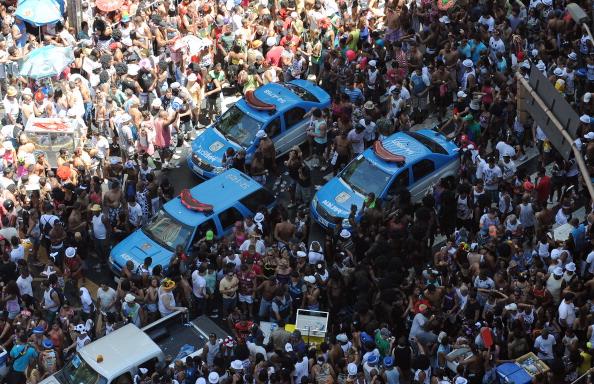RIO DE JANEIRO—Giant waves are sweeping over the shores of Rio de Janeiro, blocking highways and closing the city’s second major airport. It is estimated that this is one of the biggest events of its kind in the state’s history, a region famous among surfers for big waves.
In addition to the heavy rain storms and deadly landslides that have punished Rio de Janeiro since April 5—killing an estimated 400 people so far, including those anybody unaccounted for—the gusting winds and strong waves have been pounding the state’s coast since Thursday. Along the shore, the waves have reached up to 16 feet high and according to the Institute of Meteorology Climatempo, on the high seas, waves have swelled up to 20 feet.
Seawater has covered beaches and overrun streets in several places on the outskirts of the capital of Rio and in the cities of Niteroi, Saquarema, and Cabo Frio. According to the National Institute for Space Research, the waves affected Laguna, Santa Catarina state, all the way to Casimiro de Abreu, on the northern coast of Rio de Janeiro state.
In Rio de Janeiro city, the force of the crashing water and the sand blocked major roads such as the Atlantic Avenue in Copacabana, and Flamengo Park Lane, an expressway that connects the south zone and downtown. The wave water also invaded parts of the runway of Santos Dumont Airport—Rio’s second major airport—forcing it to be closed. Barge transport between Rio and Niteroi has also been suspended.
On the edge of Icarai in Niteroi, frightened walkers ran to protect themselves from the waves, and cars passed with difficulty through waterlogged streets.
Despite the disasters, many surfers are running to the region to make sure they do not miss this rare opportunity for a big surf. Fire Department helicopters are flying over the coast. The number of rescues has not yet been disclosed.
According to oceanographer David Zee, the phenomenon is due to an extra-tropical cyclone that passed near the coast of Rio, increasing the size of waves.
The forecast is that the breaker, which is one of the largest in the history of Rio de Janeiro state, will last until Saturday.
According to officials, the severe weather in Rio has forced some 50,000 people from their homes.




